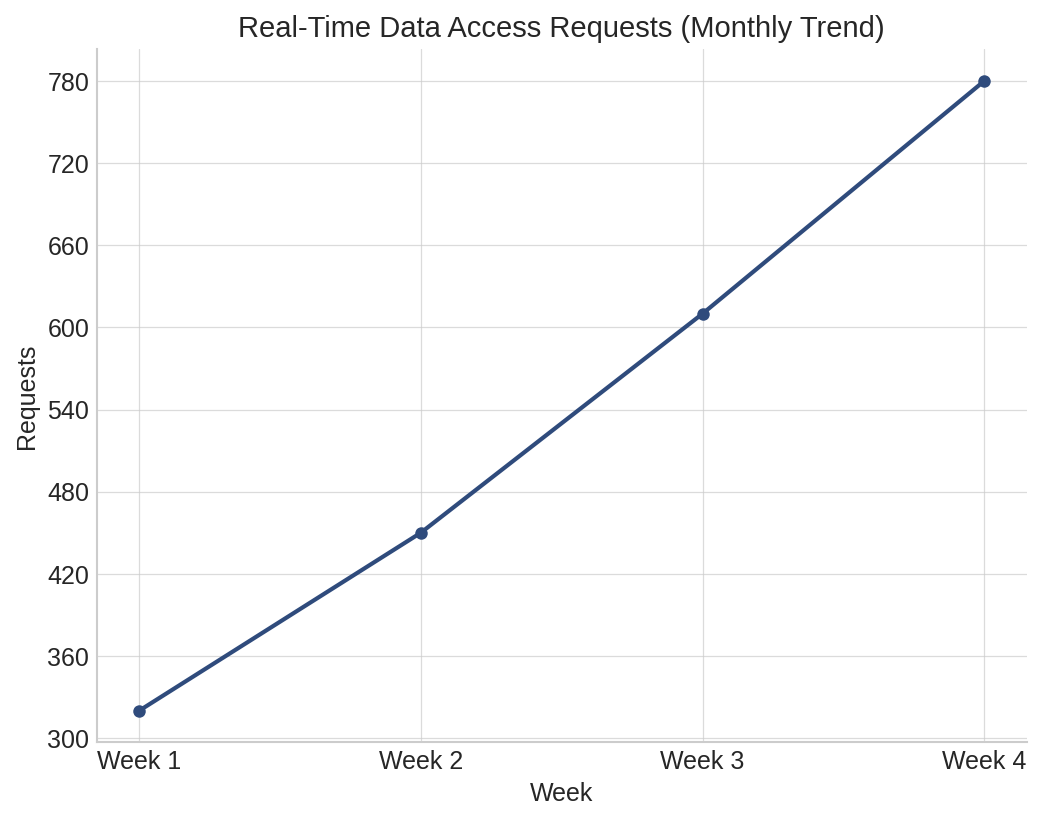
Harnessing the Power of Reporting and Analytics: Gaining Actionable Insights with Workday
This blog will explore how Workday’s reporting and analyticscapabilities enable organizations to transform data into actionable insights.By leveraging real-time data and customizable reports, companies can makeinformed decisions, track performance, and drive operational improvements. Itwill also cover how Workday’s analytics tools empower HR, finance, and businessleaders to stay ahead of trends and identify opportunities for growth.
In today’s data-driven world, the ability to harness thepower of data and turn it into actionable insights is no longer just acompetitive advantage—it's a necessity. Companies today are inundated with vastamounts of data from various departments and systems, but without the righttools to process and analyze it, this data can become overwhelming rather thanuseful.
That’s where Workday comes in. With its advanced reportingand analytics capabilities, Workday helps organizations transform raw data intoclear, meaningful insights that can guide strategic decisions, optimizeprocesses, and improve business outcomes.
As management consultant Peter Drucker aptly put it:
“What gets measured gets managed.”
Workday enables businesses to measure the right metrics,track performance, and make informed decisions based on real-time data, not gut feelings. Whether you’re in HR, finance, or operations, the power of Workday’sreporting and analytics tools will help you stay ahead of trends, monitor KPIs, and adapt to changing market conditions.
This blog will delve into how Workday’s analytics tools can drive smarter decision-making, improve performance tracking, and empowerbusiness leaders with the insights they need to succeed in today’s fast-paced environment.

The Challenge of Data Overload
Organizations today face a major challenge when it comes to data. With the sheer volume of information generated across variousdepartments, it’s easy to get lost in the noise. This is especially true for HR and finance teams, who often struggle to make sense of disparate data sources.Traditional reporting methods can be slow, cumbersome, and often fail to provide actionable insights in real-time.
- Data Silos: Many organizations struggle with fragmented data systems, which make it difficult to consolidate data and generate a comprehensive view of the business.
- Manual Reporting: Legacy systems often require manual data entry and reporting, leading to errors and delays in decision-making.
- Limited Customization: Standard reporting tools may not allow for customization, preventing organizations from focusing on the specific metrics that matter most to them.
Workday addresses these challenges by offering anintegrated, cloud-based reporting and analytics platform that providesreal-time, actionable insights for all areas of the business.
Key Features of Workday’s Reporting and Analytics Tools
- Real-Time Data Access:
Workday’s cloud-based platform ensures that data is always up-to-date, enabling real-time access to crucial business metrics. Whether you’re tracking employee performance, financial health, or project progress, you can make informed decisions based on the most current information available. - Customizable Dashboards and Reports:
Workday allows you to create customized dashboards that focus on the KPIs and metrics that are most relevant to your business objectives. This flexibility enables decision-makers to prioritize key data points and analyze trends over time. - Advanced Data Visualizations:
Workday’s reporting tools include a variety of data visualizations, such as charts, graphs, and heat maps, that make it easy to interpret complex datasets. These visualizations help business leaders quickly identify trends, outliers, and areas that need attention. - Predictive Analytics:
By leveraging machine learning and artificial intelligence, Workday can provide predictive insights that help organizations forecast future trends. For example, Workday’s predictive analytics can help HR teams anticipate turnover rates or identify potential skill gaps before they become problems. - Integrated Reporting Across Departments:
Workday’s integrated system allows data from HR, finance, and operations to be reported and analyzed together, providing a holistic view of the business. This seamless integration helps organizations track cross-functional performance and ensure alignment with overall business goals. - Self-Service Reporting:
Workday’s self-service reporting feature empowers users at all levels of the organization to generate their own reports without relying on IT. Whether you need a high-level summary or an in-depth analysis, you can quickly generate the reports you need with minimal effort.
.png)
Benefits of Workday’s Reporting and Analytics Tools
- Data-Driven Decision-Making:
By providing real-time insights and easy-to-interpret data, Workday helps business leaders make smarter, more informed decisions. Whether you're assessing employee performance, managing budgets, or optimizing operations, having accurate data at your fingertips ensures you can respond quickly to challenges and opportunities. - Increased Operational Efficiency:
Workday’s reporting tools streamline the reporting process, reducing the time and effort required to generate reports. This frees up time for business leaders to focus on strategy and decision-making, rather than data crunching. - Improved Strategic Planning:
With predictive analytics and trend analysis, Workday helps organizations plan for the future. Whether it’s forecasting revenue, tracking employee retention, or predicting demand for products, Workday’s analytics tools provide the insights needed for strategic planning. - Better Compliance and Risk Management:
Workday’s robust reporting capabilities help organizations stay compliant with regulations by providing detailed reports on key metrics such as financial performance, employee compensation, and tax compliance. This reduces the risk of errors or violations that could result in costly penalties. - Enhanced Collaboration Across Teams:
Workday’s integrated reporting features enable collaboration across departments, making it easier for HR, finance, and operations teams to share insights and work together toward common goals. This helps ensure that decisions are made based on a comprehensive understanding of the business.
Real-World Example: Improving HR Decisions with Data
A leading healthcare provider used Workday’s analytics toolsto track employee performance and identify trends in employee engagement. Byanalyzing real-time data, the organization was able to pinpoint key factorscontributing to high turnover rates and take proactive steps to improveretention. The result? A 10% reduction in turnover over the next 12 months,thanks to data-driven HR strategies.
Workwall Section:
Workday’s powerful reporting and analytics capabilities arecomplemented by Workwall, a marketplace that offers additional analyticstools and integrations to enhance your reporting experience. From AI-poweredanalytics platforms to advanced data visualization tools, Workwall helps youexpand your reporting capabilities and gain deeper insights into your businessoperations.
Whether you're looking to integrate third-party data sources or need specialized reporting tools, Workwall offers a curated selection of apps that can help you unlock the full potential of your data.
Visit Workwall’swebsite to explore a range of solutions that can take your reporting andanalytics to the next level.
Conclusion:
In an increasingly data-driven world, organizations that canharness the power of their data are the ones that will thrive. Workday’sreporting and analytics tools enable businesses to gain real-time, actionableinsights that drive smarter decision-making, enhance operational efficiency,and foster growth.
As data continues to play a crucial role in businessstrategy, the future of reporting and analytics will likely involve even moreadvanced capabilities, such as greater use of AI, machine learning, andautomated insights. The key for organizations is to continue embracing thesetools, ensuring they can adapt to new trends and make data-driven decisionsthat drive success.
Stay tuned for future updates as we continue to explore how Workday is empowering businesses with the data they need to succeed in a fast-paced world.

Follow us
Interested in more content like this? Follow us on
